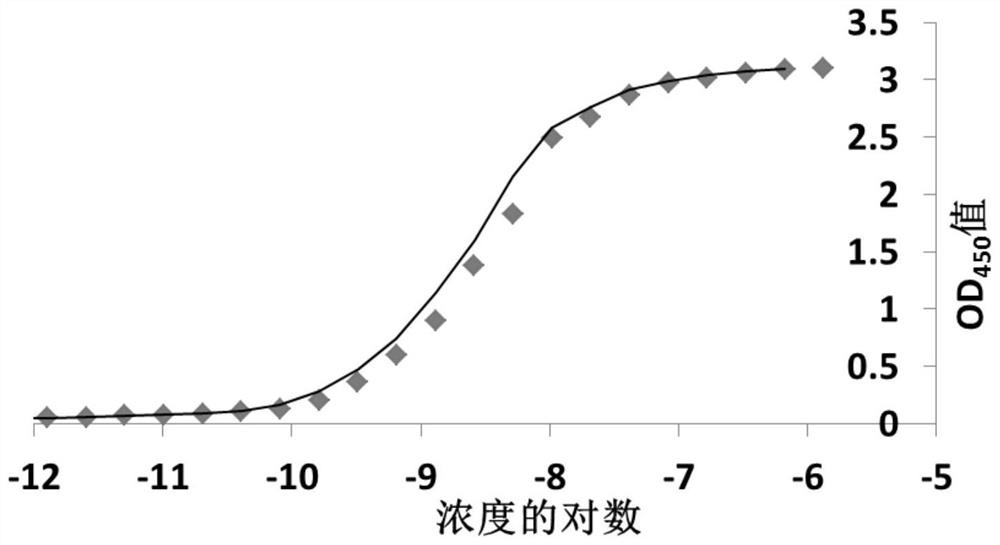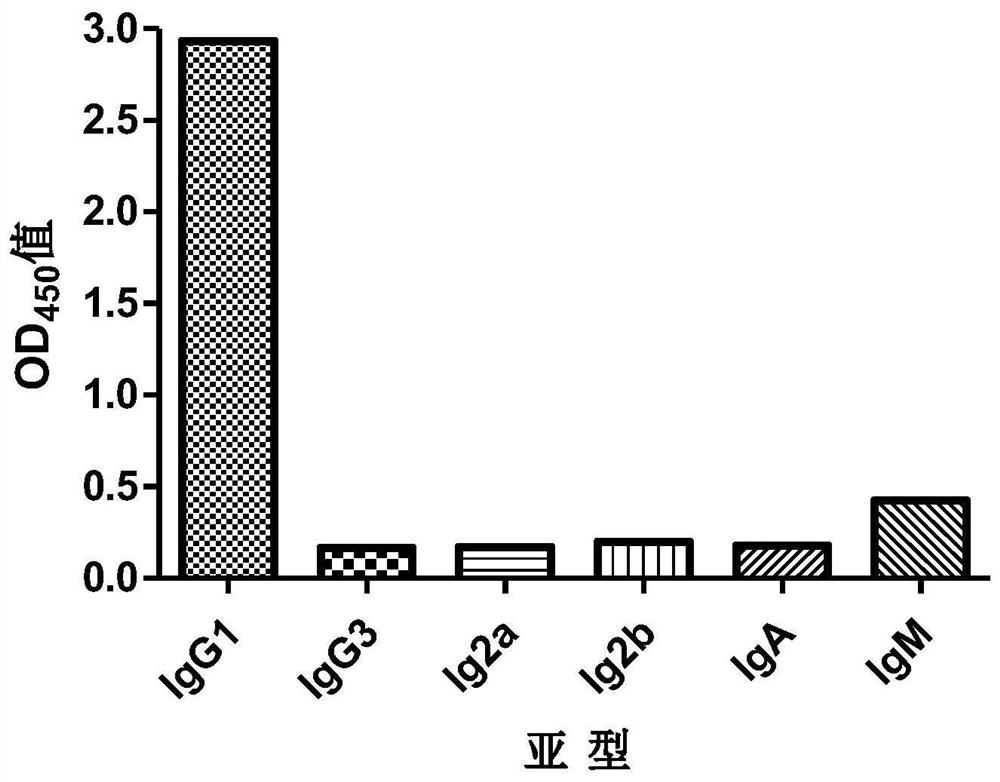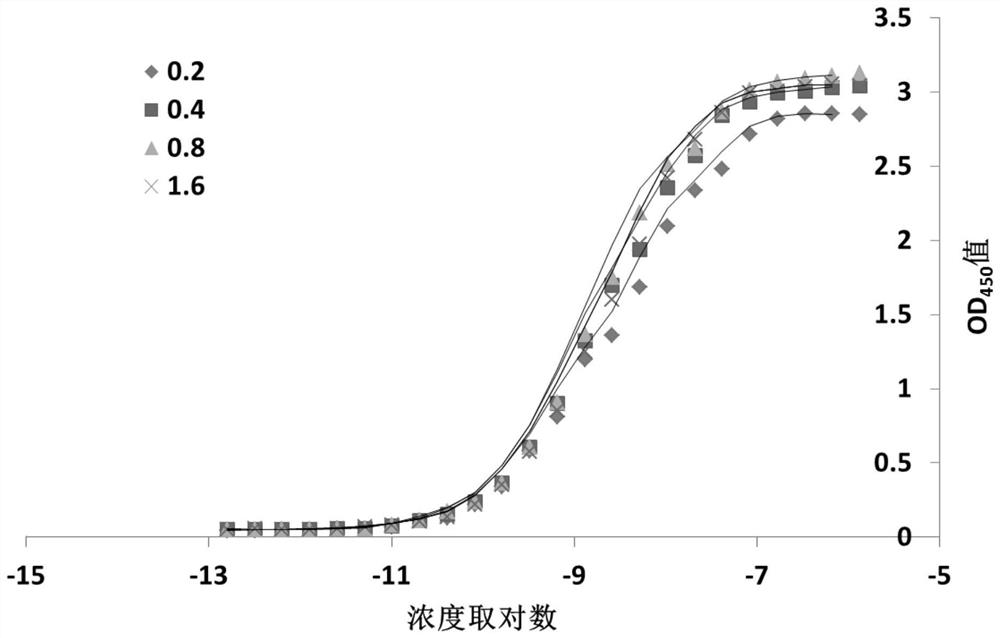Anti-porcine hemoglobin hybridoma cell line and its monoclonal antibody and application
A hybridoma cell line and porcine hemoglobin technology, applied in the field of immunology, can solve the problems of discomfort, rapid detection and complexity, and achieve the effect of high titer, specificity and good sensitivity
- Summary
- Abstract
- Description
- Claims
- Application Information
AI Technical Summary
Problems solved by technology
Method used
Image
Examples
Embodiment 1
[0024] Example 1 Preparation of anti-porcine hemoglobin hybridoma cell line and monoclonal antibody.
[0025] (1) Preparation of hybridoma cell lines
[0026] Select 4 fast-moving female BLAB / c mice aged 6-8 weeks, dilute 40 μg of porcine hemoglobin with normal saline to 0.5 mL for the first time, mix the diluted porcine hemoglobin as antigen with an equal volume of Freund’s complete adjuvant Together, mix well, and directly perform subcutaneous multi-point injection, and then replace Freund's complete adjuvant with Freund's incomplete adjuvant during the immunization process, the immunization dose is 40 μg / monkey, and the immunization is boosted every 2 weeks. The immunization process is shown in Table 1 As shown, blood was collected 7 days after 3 immunizations, and the serum antibody titer of immunized mice was detected by indirect ELISA method, and antiserum inhibition was measured by blocking ELISA. Fusion with mouse myeloma SP2 / 0 cells, and then subcloning positive well...
Embodiment 2
[0031] Example 2 Characterization of the anti-porcine hemoglobin monoclonal antibody of the present invention
[0032] (1) Antibody titer determination
[0033] Use 5ug / mL porcine hemoglobin as the coating source, coat the detection plate, and dilute the purified anti-porcine hemoglobin monoclonal antibody at 1:200, 1:400, 1:800, ... 1:409600 as the primary antibody Add it into the well of the microtiter plate, incubate, then add HRP-labeled goat anti-mouse secondary antibody, then use TMB to develop color, and use sulfuric acid as the stop solution to stop the reaction. The result shows that the purified anti-porcine hemoglobin monoclonal antibody When the concentration is 1mg / ml, the titer reaches 1:819200. Ascites titer also reached 1:819200, see figure 1 .
PUM
 Login to View More
Login to View More Abstract
Description
Claims
Application Information
 Login to View More
Login to View More - R&D
- Intellectual Property
- Life Sciences
- Materials
- Tech Scout
- Unparalleled Data Quality
- Higher Quality Content
- 60% Fewer Hallucinations
Browse by: Latest US Patents, China's latest patents, Technical Efficacy Thesaurus, Application Domain, Technology Topic, Popular Technical Reports.
© 2025 PatSnap. All rights reserved.Legal|Privacy policy|Modern Slavery Act Transparency Statement|Sitemap|About US| Contact US: help@patsnap.com



